Are you a newbie to vinyl looking for expert advice in how to set up a turntable, clean and handle vinyl treasures, learn more about the art of collecting? Maybe, like me, you are a long time vinyl advocate ready to make a more serious investment in collectible grade LPs and want to know the minutia of codes and label differences to aid in the productive effort of record collecting (in other words, not getting screwed). From fledgling beginner to seasoned expert there is something to learn from both of these DVDs by the venerable Michael Fremer, the number one vinyl guru working today. As a matter of fact, many of us look upon Michael as a sort of super hero for the vinyl crowd, “Vinyl Man” if you will!
I had the pleasure of attending Michael’s “Turntable Setup Seminar” in Denver Colorado in October of 2008. It was easily the best audio seminar I think I have ever attended. Michael is witty, laid back and as knowledgeable as one can get regarding things vinyl. It prompted me to buy the first DVD, and now that I own and have thoroughly viewed both I can say without a doubt, if you are into vinyl and play records you need to have these two DVDs. Both of the DVDs are fairly thorough and both have PDF files with additional useful tidbits.
Michael “Vinyl Man” Fremer (the face of a mentor to the masses and yours truly)
I have been listening to vinyl since I bought my first LP when I was a whopping 8 years old. My grandparents bought me my first small integrated stereo system when I was about 12. I was a totally dedicated musician and on my way to being the next great guitar god. Every penny I could muster went to buy guitars, drums or records. I hate to think of the records that I destroyed along the way because I lacked any real knowledge of how to handle and care for records, let alone set up turntables. Even in my college days of serious stereo systems and really good turntables, I lacked the requisite knowledge to really know how to best setup my tables and preserve records. It all came through trials and a lot of unfortunate errors. The good news is that if you are just starting, no need for the expensive learning curve. If you are a seasoned vet, well, there is always more that can be learned as I found out by watching these two videos.
It makes sense to start with the first and that is the Practical Guide to Turntable Setup. The DVD is arranged into six separate video chapters and contains roughly three hours of content: “Why We Love Vinyl”, “Mysteries of Mastering”, “Tools of the Trade”, “Setting up a Pro-ject RM-5”, “Setting up a VPI Scoutmaster”, and “Final Words”. You can really tell that Michael loves his work! This video also comes with a PDF file on table setup. The video starts with a look at “Why We Love Vinyl” and so many prefer it over CDs. Michael makes a pretty good argument for the world of vinyl and he goes through a pretty good selection from his own collection. That collection by the way is pretty impressive. Think racks and racks of vinyl. Almost looks like he is standing in the record section of a large library!
As the DVD progresses it moves to the “Mysteries of Mastering”. If you have ever wondered how they go about mastering and making those wonderful pieces of vinyl, this will answer most of the questions. Michael visits mastering engineer George Marino of Sterling Sound in New York City to show us how records are made. George does a pretty good job of explaining how the mastering engineer has to make artistic choices to ensure the intent of the artists really comes out of the vinyl. There is also a very good overview of the mastering studio and how it all works.
In the next section, “Tools of the Trade”, we get to see a good overview of everything you will need to properly setup a table. Michael offers some very good suggestions for inexpensive tools as well as the top-of-the-line items. You need not spend a fortune to equip yourself with the proper tools. It is reassuring when the foremost expert on this topic tells you that you do not have to go overboard to get the right tools and he stresses this pretty well. I learned a few interesting bits that I had not thought of before from Michael regarding this aspect. The value of toothpicks should never be underestimated.
Moving on the “Setting Stylus Pressure” and we get an in depth look at the proper way to set this very important step. I have always been rather nervous about this one aspect but after sitting through Michael’s explanation of the best way to do this, I am less petrified of causing damage to my stylus. You will need a good stylus gauge and one of the most recognizable is the one made by Shure. It is inexpensive and very competent. He shows other options that you can consider. I am now considering a digital unit after watching Michael in action.
The next step in the process is setting up the “Horizontal Cartridge Geometry”. Michael goes into depth about this process including the suggestion of some other tools that you might be well advised to look into, including the Wally Tractor. He also brings up magnifying glass and a small light to aid in seeing the rather small bits.
The next section is devoted to “Setting Vertical Tracking Angle”. This facet seems to generate some interesting debate as to how important, if at all, this process is. Personally, I listen to Michael and set my VTA per this process. There are a lot of interesting little tips so I advise that you pay close attention to this section whether you believe in VTA or not, especially regarding tracking force and its relationship to VTA.
The last two Sections are “Setting Anti Skate” and “Setting Azimuth. These sections deal with the forces exerted on your tonearm and cartridge as it is pulled towards the center section of the record. The other attacks the problem of cartridge position relative to the groove. Both are extremely important and Michael does a superb job of walking you through both process and covers the most common tonearms in use today so that you get the max performance out of your table. He will even demonstrate a way you can test the effectiveness of your azimuth settings with a voltmeter.
As I stated earlier, Michael shows you how to set up a couple of tables from the very start and it is done in a way that someone without any previous hands on knowledge could walk through the process and do a fairly decent job provided you can work with small pieces and are familiar with rudimentary tools. I will not go into anymore depth about the tables that he uses. Suffice it to say that he chose a few tables that are commonly in use today and they are not made out of unobtanium or cantaffordium!
At the end of the day I think this DVD, combined with the PDF files, accomplishes what Michael set out to do and that is to take the mystery, voodoo and fear out of turntable setup, so that the beginner can get right to enjoying their vinyl, and also be able to make adjustments and change cartridges without fear of the Vinyl Gods sending lightning bolts upon your head if you are not one of the chosen Expert Vinylphiles!!
The second DVD, It’s A Vinyl World, After All, focuses more on being informative rather than on the instruction of how-to, as did the first DVD. Not to say that it is not instructional, but the first part of the DVD really focuses on manufacturing processes of record pressing with trips to Pallas and RTI, to see the actual process of the pressing of the record. This will take you from mastering tapes making the original pressings, to subsequently being boxed and ready to hit the shelves of your favorite vinyl outlet. It is very interesting and done with a light hearted delivery that will make you chuckle here and there, at least it did me. There are also sections on “Record Handling and Storage”, “Record Playing” and “Record Cleaning”. The last three are the instructional bits.
The tour through the Pallas Pressing Plant in Diepolz, Germany and the RTI plant in Camarillo, California are very informative and give you a thorough look at how a record is made, starting with the original lacquer as it leaves the cutting lathe and the steps it goes through to result in a finished album ready to be placed on your turntable. It is something that very few people ever really get to see and Michael takes us on a very special tour of both facilities, with interviews and discussions with the workers. I have to say, at one point he is standing next to a lady who is doing quality control checks on Led Zeppelin boxed vinyl sets, as she goes through the actual LPs that have just come out of the press. Michael does a great job of handling the fact that she all but ignores him, especially when he asks her a direct question. She finally comes around; but you can tell that he is trying not to laugh at the whole situation. Great stuff.
At RTI we are treated to a mastering and cutting session. Michael lets us in on a mastering session with recording luminaries Steve Hoffman and Kevin Grey as they actually master the Blue Note recording of Tina Brooks, Back to the Tracks. In attendance from Music Matters are Joe Harley and Ron Rambach, along with then-EMI employee Don Andes who was responsible for the care of and the hand delivery of the original Blue Note recordings (he’s since been “let go” as they say due to budget cuts). The average audiophile never gets this close to the original recordings. Here you are with the group as they listen to the original tapes being mastered and readied for the cutting of a new lacquer. It is one of the most interesting pieces of film I have seen regarding the recording process. OH and get this: After the lacquer is cut via a Neumann cutting head, these seemingly sane guys let Mikey take the original lacquer across the street for plating and stamping process , which Michael will run you through. What were they thinking? For a more in-depth view of what Music Matters is all about visit http://www.musicmattersjazz.com/team.html. You will get the complete story and a bio on everyone involved in the project.
(The Music Matters Ltd. Mastering Group, Ron Rambach, John Harley, Steve Hoffman and Kevin Grey)
The DVD moves into the instructional parts with “Record Handling and Storage”. Michael does a really nice job of explaining the correct way of handling an LP and storing them so that not only does the LP itself stay in the best possible shape but also shows us how to avoid damaging the covers. After all, half the joy in records is the covers and the liner notes.
“Record Cleaning” is the section that really caused me to pay close attention. While I clean all my albums with a VPI 16.5 vacuum unit, I found some really good tidbits on how to better clean them and get the most out of them. This is one of the most thorough sections of the DVD and Michael uses three different cleaning machines to demonstrate the proper way to clean with a machine and also goes so far as to show the proper use of the Gem Dandy record cleaning apparatus. And what an apparatus it is. It looks like someone put it together while still standing in the plumbing section of Home Depot. That being said, it seems to work and is a low cost alternative to costly powered cleaning rigs. Believe me, I am not complaining as I build a lot of my own tweaks including tuning panels, stands, cable lifts and even jumpers, so hats off to Michael for showing the less glamorous tools out there.
The section on “Record Playing” may seem elementary but even here are some really interesting tips, especially on stylus cleaning. While I have used some of the same items Michael demos, I can see now that I may have misused some of them and would not have known had it not been for this DVD. Since I have some very costly (read Koetsu) cartridges, this alone made the DVD worth its weight in gold. You can really get an insight into some of the lengths we go to check out things we review. Note the stethoscope next to his Caliburn. Yes, we use those things to check for vibration and noise coming through to the tables. If you pay careful attention to the video you will pick up little things like that.
Finally, the section on “Record Collecting” is just great fun. Michael takes you through some of his LPs chosen at random and speaks to why they are such great pieces. He also takes the time to discuss, briefly, the art of reading the dead area of an LP just before the label. This is where the stamping information is and it is absolutely a must to know if you are even semi serious about collecting vinyl. One thing that I really enjoyed was Michael’s take on the phenomenon of “Hot Stampers”. According to the site http://www.dccblowout.com, the home of Hot Stampers, in the section Hot Stampers they pose the question, “What are hot stampers and why are they so expensive?” They can be very expensive indeed. In some cases hundreds of dollars per album. They define a Hot Stamper as “when a copy sounds really good, unusually good, sometimes as good as we’ve ever heard it, we call such a hot sounding record a Hot Stamper LP.” Michael has a very interesting take on this phenomenon and you should really take a listen before pouring out your hard earned cash for one of these albums.
He also includes the PDF, “The Fascinating Hobby of Vinyl Record Collecting”. An in-depth look at record collecting by Robert Benson who is every bit the collector that Michael is and it is a great reference piece for anyone looking to collect or just to be more informed on how to buy good vinyl. Also the PDF “What’s a Lacquer?” and two informative PDFs titled “The Scanning Electron Microscope, A New Tool in Disc Recording” and “Performance Characteristics of the Commercial Stereo Disc”. It is all fascinating reading. (Ok maybe the microscope and performance pieces not so much for yours truly.)
As Michael calls it, the “Wrap-up” is a whirlwind tour and chock full of great education. I can say without a doubt or second thought anyone who is a vinyl fan, thinking about becoming a vinyl fan, has ever mentioned the word “vinyl”, etc., needs to invest in these two tools. You will be glad you did. I sure am and they are tools that you will come back to time and time again. All in all, a true bargain at the price!
Oh yeah and if you are really diligent, each disc has a hidden treasure in it. I love the one with his “mother” (really Mikey) talking to him about the evils of recording collecting. Funny, funny stuff but I won’t tell you where it is. You will have to buy the DVDs and find them for yourselves. Happy Hunting!!!!





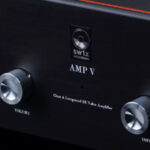
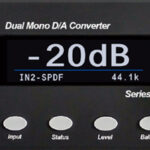

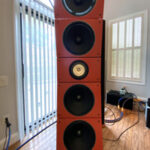
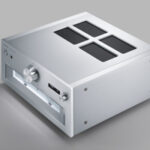
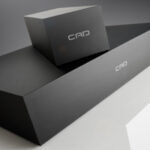

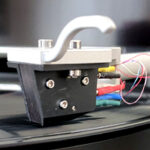
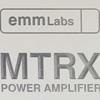


Are you a newbie to vinyl looking for expert advice in how to set up a turntable, clean and handle vinyl treasures, learn more about the art of collecting? Maybe, like me, you are a long time vinyl advocate ready to make a more serious investment in collectible grade LPs and want to know the minutia of codes and label differences to aid in the productive effort of record collecting (in other words, not getting screwed). From fledgling beginner to seasoned expert there is something to learn from both of these DVDs by the venerable Michael Fremer, the number one vinyl guru working today. As a matter of fact, many of us look upon Michael as a sort of super hero for the vinyl crowd, “Vinyl Man” if you will!
I had the pleasure of attending Michael’s “Turntable Setup Seminar” in Denver Colorado in October of 2008. It was easily the best audio seminar I think I have ever attended. Michael is witty, laid back and as knowledgeable as one can get regarding things vinyl. It prompted me to buy the first DVD, and now that I own and have thoroughly viewed both I can say without a doubt, if you are into vinyl and play records you need to have these two DVDs. Both of the DVDs are fairly thorough and both have PDF files with additional useful tidbits.
Michael “Vinyl Man” Fremer (the face of a mentor to the masses and yours truly)
I have been listening to vinyl since I bought my first LP when I was a whopping 8 years old. My grandparents bought me my first small integrated stereo system when I was about 12. I was a totally dedicated musician and on my way to being the next great guitar god. Every penny I could muster went to buy guitars, drums or records. I hate to think of the records that I destroyed along the way because I lacked any real knowledge of how to handle and care for records, let alone set up turntables. Even in my college days of serious stereo systems and really good turntables, I lacked the requisite knowledge to really know how to best setup my tables and preserve records. It all came through trials and a lot of unfortunate errors. The good news is that if you are just starting, no need for the expensive learning curve. If you are a seasoned vet, well, there is always more that can be learned as I found out by watching these two videos.
It makes sense to start with the first and that is the Practical Guide to Turntable Setup. The DVD is arranged into six separate video chapters and contains roughly three hours of content: “Why We Love Vinyl”, “Mysteries of Mastering”, “Tools of the Trade”, “Setting up a Pro-ject RM-5”, “Setting up a VPI Scoutmaster”, and “Final Words”. You can really tell that Michael loves his work! This video also comes with a PDF file on table setup. The video starts with a look at “Why We Love Vinyl” and so many prefer it over CDs. Michael makes a pretty good argument for the world of vinyl and he goes through a pretty good selection from his own collection. That collection by the way is pretty impressive. Think racks and racks of vinyl. Almost looks like he is standing in the record section of a large library!
As the DVD progresses it moves to the “Mysteries of Mastering”. If you have ever wondered how they go about mastering and making those wonderful pieces of vinyl, this will answer most of the questions. Michael visits mastering engineer George Marino of Sterling Sound in New York City to show us how records are made. George does a pretty good job of explaining how the mastering engineer has to make artistic choices to ensure the intent of the artists really comes out of the vinyl. There is also a very good overview of the mastering studio and how it all works.
In the next section, “Tools of the Trade”, we get to see a good overview of everything you will need to properly setup a table. Michael offers some very good suggestions for inexpensive tools as well as the top-of-the-line items. You need not spend a fortune to equip yourself with the proper tools. It is reassuring when the foremost expert on this topic tells you that you do not have to go overboard to get the right tools and he stresses this pretty well. I learned a few interesting bits that I had not thought of before from Michael regarding this aspect. The value of toothpicks should never be underestimated.
Moving on the “Setting Stylus Pressure” and we get an in depth look at the proper way to set this very important step. I have always been rather nervous about this one aspect but after sitting through Michael’s explanation of the best way to do this, I am less petrified of causing damage to my stylus. You will need a good stylus gauge and one of the most recognizable is the one made by Shure. It is inexpensive and very competent. He shows other options that you can consider. I am now considering a digital unit after watching Michael in action.
The next step in the process is setting up the “Horizontal Cartridge Geometry”. Michael goes into depth about this process including the suggestion of some other tools that you might be well advised to look into, including the Wally Tractor. He also brings up magnifying glass and a small light to aid in seeing the rather small bits.
The next section is devoted to “Setting Vertical Tracking Angle”. This facet seems to generate some interesting debate as to how important, if at all, this process is. Personally, I listen to Michael and set my VTA per this process. There are a lot of interesting little tips so I advise that you pay close attention to this section whether you believe in VTA or not, especially regarding tracking force and its relationship to VTA.
The last two Sections are “Setting Anti Skate” and “Setting Azimuth. These sections deal with the forces exerted on your tonearm and cartridge as it is pulled towards the center section of the record. The other attacks the problem of cartridge position relative to the groove. Both are extremely important and Michael does a superb job of walking you through both process and covers the most common tonearms in use today so that you get the max performance out of your table. He will even demonstrate a way you can test the effectiveness of your azimuth settings with a voltmeter.
As I stated earlier, Michael shows you how to set up a couple of tables from the very start and it is done in a way that someone without any previous hands on knowledge could walk through the process and do a fairly decent job provided you can work with small pieces and are familiar with rudimentary tools. I will not go into anymore depth about the tables that he uses. Suffice it to say that he chose a few tables that are commonly in use today and they are not made out of unobtanium or cantaffordium!
At the end of the day I think this DVD, combined with the PDF files, accomplishes what Michael set out to do and that is to take the mystery, voodoo and fear out of turntable setup, so that the beginner can get right to enjoying their vinyl, and also be able to make adjustments and change cartridges without fear of the Vinyl Gods sending lightning bolts upon your head if you are not one of the chosen Expert Vinylphiles!!
The second DVD, It’s A Vinyl World, After All, focuses more on being informative rather than on the instruction of how-to, as did the first DVD. Not to say that it is not instructional, but the first part of the DVD really focuses on manufacturing processes of record pressing with trips to Pallas and RTI, to see the actual process of the pressing of the record. This will take you from mastering tapes making the original pressings, to subsequently being boxed and ready to hit the shelves of your favorite vinyl outlet. It is very interesting and done with a light hearted delivery that will make you chuckle here and there, at least it did me. There are also sections on “Record Handling and Storage”, “Record Playing” and “Record Cleaning”. The last three are the instructional bits.
The tour through the Pallas Pressing Plant in Diepolz, Germany and the RTI plant in Camarillo, California are very informative and give you a thorough look at how a record is made, starting with the original lacquer as it leaves the cutting lathe and the steps it goes through to result in a finished album ready to be placed on your turntable. It is something that very few people ever really get to see and Michael takes us on a very special tour of both facilities, with interviews and discussions with the workers. I have to say, at one point he is standing next to a lady who is doing quality control checks on Led Zeppelin boxed vinyl sets, as she goes through the actual LPs that have just come out of the press. Michael does a great job of handling the fact that she all but ignores him, especially when he asks her a direct question. She finally comes around; but you can tell that he is trying not to laugh at the whole situation. Great stuff.
At RTI we are treated to a mastering and cutting session. Michael lets us in on a mastering session with recording luminaries Steve Hoffman and Kevin Grey as they actually master the Blue Note recording of Tina Brooks, Back to the Tracks. In attendance from Music Matters are Joe Harley and Ron Rambach, along with then-EMI employee Don Andes who was responsible for the care of and the hand delivery of the original Blue Note recordings (he’s since been “let go” as they say due to budget cuts). The average audiophile never gets this close to the original recordings. Here you are with the group as they listen to the original tapes being mastered and readied for the cutting of a new lacquer. It is one of the most interesting pieces of film I have seen regarding the recording process. OH and get this: After the lacquer is cut via a Neumann cutting head, these seemingly sane guys let Mikey take the original lacquer across the street for plating and stamping process , which Michael will run you through. What were they thinking? For a more in-depth view of what Music Matters is all about visit http://www.musicmattersjazz.com/team.html. You will get the complete story and a bio on everyone involved in the project.
(The Music Matters Ltd. Mastering Group, Ron Rambach, John Harley, Steve Hoffman and Kevin Grey)
The DVD moves into the instructional parts with “Record Handling and Storage”. Michael does a really nice job of explaining the correct way of handling an LP and storing them so that not only does the LP itself stay in the best possible shape but also shows us how to avoid damaging the covers. After all, half the joy in records is the covers and the liner notes.
“Record Cleaning” is the section that really caused me to pay close attention. While I clean all my albums with a VPI 16.5 vacuum unit, I found some really good tidbits on how to better clean them and get the most out of them. This is one of the most thorough sections of the DVD and Michael uses three different cleaning machines to demonstrate the proper way to clean with a machine and also goes so far as to show the proper use of the Gem Dandy record cleaning apparatus. And what an apparatus it is. It looks like someone put it together while still standing in the plumbing section of Home Depot. That being said, it seems to work and is a low cost alternative to costly powered cleaning rigs. Believe me, I am not complaining as I build a lot of my own tweaks including tuning panels, stands, cable lifts and even jumpers, so hats off to Michael for showing the less glamorous tools out there.
The section on “Record Playing” may seem elementary but even here are some really interesting tips, especially on stylus cleaning. While I have used some of the same items Michael demos, I can see now that I may have misused some of them and would not have known had it not been for this DVD. Since I have some very costly (read Koetsu) cartridges, this alone made the DVD worth its weight in gold. You can really get an insight into some of the lengths we go to check out things we review. Note the stethoscope next to his Caliburn. Yes, we use those things to check for vibration and noise coming through to the tables. If you pay careful attention to the video you will pick up little things like that.
Finally, the section on “Record Collecting” is just great fun. Michael takes you through some of his LPs chosen at random and speaks to why they are such great pieces. He also takes the time to discuss, briefly, the art of reading the dead area of an LP just before the label. This is where the stamping information is and it is absolutely a must to know if you are even semi serious about collecting vinyl. One thing that I really enjoyed was Michael’s take on the phenomenon of “Hot Stampers”. According to the site http://www.dccblowout.com, the home of Hot Stampers, in the section Hot Stampers they pose the question, “What are hot stampers and why are they so expensive?” They can be very expensive indeed. In some cases hundreds of dollars per album. They define a Hot Stamper as “when a copy sounds really good, unusually good, sometimes as good as we’ve ever heard it, we call such a hot sounding record a Hot Stamper LP.” Michael has a very interesting take on this phenomenon and you should really take a listen before pouring out your hard earned cash for one of these albums.
He also includes the PDF, “The Fascinating Hobby of Vinyl Record Collecting”. An in-depth look at record collecting by Robert Benson who is every bit the collector that Michael is and it is a great reference piece for anyone looking to collect or just to be more informed on how to buy good vinyl. Also the PDF “What’s a Lacquer?” and two informative PDFs titled “The Scanning Electron Microscope, A New Tool in Disc Recording” and “Performance Characteristics of the Commercial Stereo Disc”. It is all fascinating reading. (Ok maybe the microscope and performance pieces not so much for yours truly.)
As Michael calls it, the “Wrap-up” is a whirlwind tour and chock full of great education. I can say without a doubt or second thought anyone who is a vinyl fan, thinking about becoming a vinyl fan, has ever mentioned the word “vinyl”, etc., needs to invest in these two tools. You will be glad you did. I sure am and they are tools that you will come back to time and time again. All in all, a true bargain at the price!
Oh yeah and if you are really diligent, each disc has a hidden treasure in it. I love the one with his “mother” (really Mikey) talking to him about the evils of recording collecting. Funny, funny stuff but I won’t tell you where it is. You will have to buy the DVDs and find them for yourselves. Happy Hunting!!!!